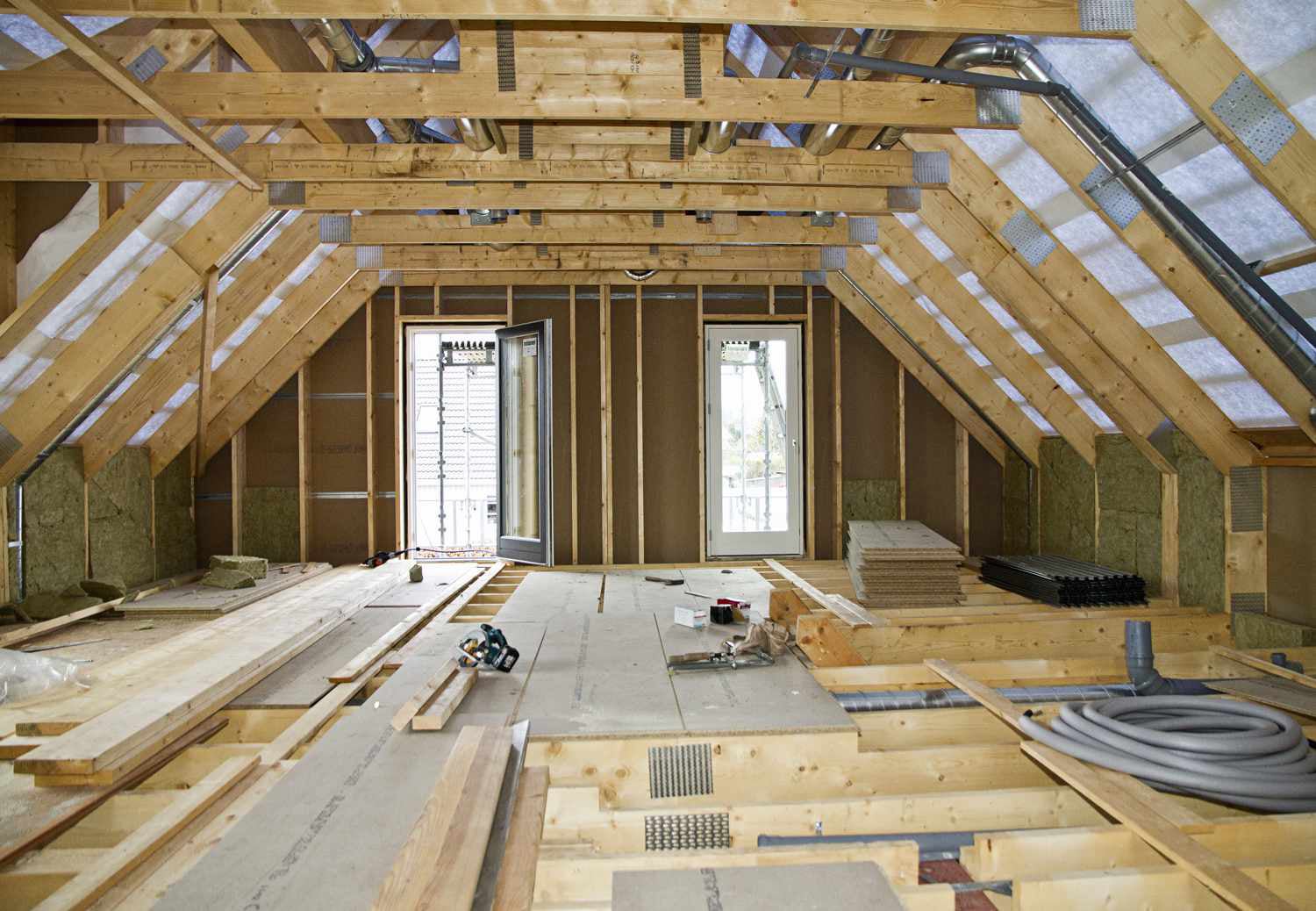What is a Roof Joist?
A roof joist is a horizontal structural element that helps support the weight of the roof and any additional loads, such as snow or maintenance workers. Roof joists typically run parallel to each other and are spaced evenly to distribute the roof's weight efficiently. They connect to walls or beams and form the skeleton that the roofing material sits upon. In many cases, roof joists also serve as a key part of the ceiling framework inside a building.
Without properly installed roof joists, a roof structure would lack the necessary stability and strength to last through harsh weather conditions and the test of time.
Types of Roof Joists
Several types of roof joists are used depending on the architectural design, load requirements, and aesthetic preferences. Let's look at the most common types:
1. Solid Lumber Joists
Solid lumber joists are made from single pieces of wood, often pine, fir, or spruce. They are traditionally used in residential construction due to their affordability and ease of installation. However, their span capabilities are limited compared to engineered options.
2. I-Joists
I-joists, sometimes referred to as engineered joists, have an "I" shaped cross-section. They combine solid wood flanges (top and bottom) with a web made of plywood or oriented strand board (OSB). This design offers excellent strength-to-weight ratios and allows for longer spans without sagging, making them a popular choice in modern construction.
3. Open Web Trusses
Open web trusses are prefabricated units made of wood or metal. Their triangular web configuration offers exceptional strength and flexibility, especially for spanning large distances. They also provide convenient spaces for running mechanical systems like plumbing, HVAC, and electrical wiring.
4. Steel Joists
In commercial and industrial buildings, steel joists are frequently used because of their ability to handle heavy loads and span greater distances than wood options. Steel roof joists are typically fabricated according to specific standards, ensuring a high level of performance and reliability.
Materials Used for Roof Joists
Choosing the right material for your roof joist is crucial, as it impacts the structure’s durability, cost, and design flexibility. Here are some of the most common materials:
Wood
Wood remains the most traditional and widely used material for roof joists in residential construction. It is relatively inexpensive, easy to work with, and provides good thermal properties. However, it is susceptible to issues like rot, pests, and warping if not properly maintained.
Engineered Wood
Engineered wood products like laminated veneer lumber (LVL) and glued laminated timber (Glulam) are gaining popularity for roof joists. They offer higher strength, greater uniformity, and improved resistance to environmental factors compared to traditional solid wood.
Steel
Steel is the go-to material for commercial applications. Its non-combustible nature, strength, and ability to cover wide spans without intermediate supports make it an ideal choice for large buildings, warehouses, and high-rise structures.
Composite Materials
In specialized applications, composites combining wood, steel, and synthetic materials are used. These high-performance materials often offer superior durability, environmental resistance, and lighter weights compared to traditional options.
Applications of Roof Joists
Roof joists serve a variety of applications across different building types. Understanding these can help you appreciate the critical role they play in construction.
Residential Buildings
In homes, roof joists primarily support the roof and ceiling. They provide the necessary framework for insulation, lighting fixtures, and ceiling finishes. Properly installed roof joists ensure that the house remains structurally sound and energy-efficient.
Commercial Buildings
In commercial buildings, especially those requiring wide open spaces such as offices or retail stores, roof joists (particularly steel or open web trusses) are essential. They allow for flexible interior layouts without the need for numerous load-bearing walls.
Industrial Facilities
Industrial buildings often require heavy-duty roof joist systems capable of supporting rooftop equipment like HVAC units, solar panels, and maintenance catwalks. Here, steel joists are predominantly used due to their strength and fire resistance.
Agricultural Structures
In barns, storage sheds, and other agricultural structures, roof joists must support heavy loads and endure harsh weather conditions. Often, simpler wood joist systems are used, although engineered solutions are becoming more common for their durability.
The roof joist is a fundamental component that ensures the strength, stability, and functionality of a roof. From traditional solid lumber to high-tech steel and composite systems, there are various types and materials of roof joists to suit every project’s needs. By understanding the different types, materials, and applications, homeowners, builders, and architects can make more informed decisions that enhance both the safety and longevity of their buildings.
Whether you are building a cozy home or a large industrial warehouse, selecting the right roof joist system is key to a successful construction project. Never underestimate the power of a well-chosen roof joist — it is quite literally the support that holds everything above your head.
